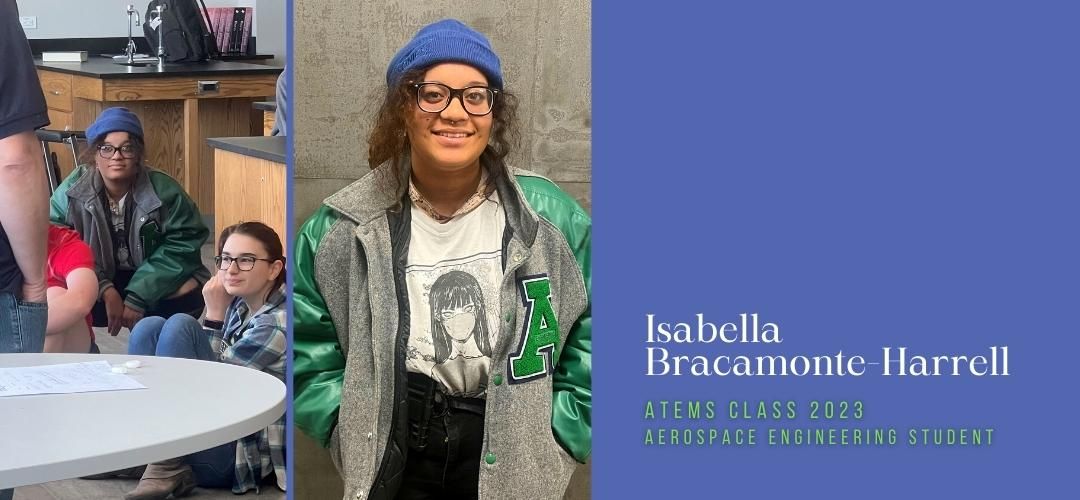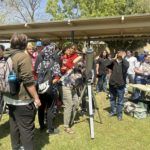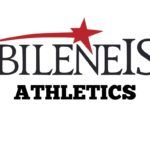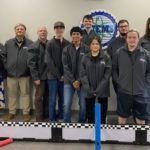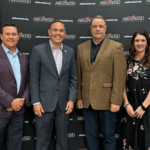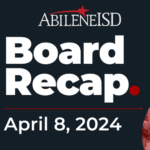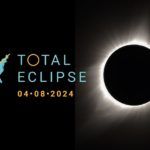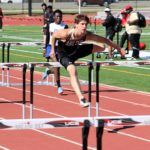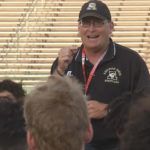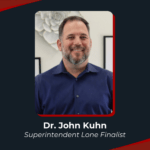In November 2015, then-NASA Administrator, Maj. Gen. (Ret.) Charles F. Bolden Jr., announced a bold vision for the program’s largest effort to date when he expressed NASA’s goal of sending humans to Mars by the year 2030.
Two years ago, ATEMS junior Isabella Bracamonte-Harrell enrolled in aerospace engineering and discovered that she had a dream that might seem a bit of a stretch to some. But it is a realistic goal in her mind: she wants to be on Team Mars.
“I slowly began to realize while taking that class that I could be one of the people who helps get humans to Mars,” said Bracamonte-Harrell, who plans to attend the University of Texas-Arlington, which has one of the premier physics and aeronautics programs in the country. “We’ve been learning about Wernher von Braun and his role in helping get American astronauts to the moon, and I’ve come to realize that I want that opportunity to come to me one day and have the chance to do what he did.”
The United States, as well as other countries and now private companies backed by billionaires, has been probing deep space since the late 1950s. The U.S. and Apollo 11 won the initial race to the moon when Neil Armstrong became the first human to walk on its surface on July 20, 1969. Wernher von Braun, the man commonly referred to as the “Father of Space Travel,” was a former Nazi who secretly moved to the U.S. after World War II along with 1,600 other German scientists, engineers, and technicians as part of an operation to push America into space. The U.S. won the space race against Russia in the 1960s, but now the race for Mars has been joined by companies like SpaceX, Blue Origin and Virgin Galactic. They all are vying for the brightest minds to help them be the first to attempt to colonize the Red Planet.
And just as von Braun was in the control room when Apollo 11 landed on the moon, Bracamonte-Harrell dreams of being in a similar spot one day when humans finally step foot on Mars.
“To be in the control room when we put a human on Mars would be so awesome,” she said. “The biggest thing preventing that right now – aside from the billions that it will cost in research and actual travel to Mars – is the medical issues that are involved: radiation poisoning, cancer risk, bone atrophy, and loss of motor skills. Scientists and doctors are really working hard to find a way to prevent or deal with those issues. That’s why right now they’re gathering as much information about Mars as possible so that they know just how cautious they have to be before sending a human to Mars.”
Bracamonte-Harrell said she’s thinking about Mars because of what’s happening at ATEMS.
“The aerospace lab we have has me so excited,” she said. “I learned how to kind of fly an airplane at the beginning of the school year, build an aircraft and build rockets. I know that this goal of mine will definitely be a challenge, but it’s something I really want to push for as I get into college. Because of this new building (The LIFT), we have a lot more resources and opportunities to help me reach that goal.”
And what happens after the United States eventually conquers Mars?
“I don’t think that’s really been considered, mainly because so much attention and energy has been placed on just getting to Mars,” she said. “The main reason we’ve been so focused on Mars is because it’s atmosphere is the closest to that of Earth. We need to find a viable life source in case something happens to this planet. Mercury and Venus are too hot, and after that the rest of the planets are made up of gases.”
In the present, Bracamonte-Harrell is part of the SkillsUSA program, a partnership of students, teachers, and industry working together to ensure America has a skilled workforce. SkillsUSA helps each student excel in leadership skills, technical and engineering skills, STEM (Science, Technology, Engineering, and Mathematics), and occupational related skills in 12 of the cluster areas.
In late February, SkillsUSA students from ATEMS went to San Angelo to compete against 13 other school districts for the chance to advance to the state competition in March. Bracamonte-Harrell won two gold medals (Principles of Engineering and Additive Manufacturing) and was on a second-place IT Quizbowl team. Those were just three of the 42 medals that AISD students collected in IT, Graphic Design & Animation, Automotive Technology, and Welding.
In addition, Bracamonte-Harrell was elected one of seven District 2 officers. In order to earn that distinction, she had to write three 500-word essays, speak in front of the SkillsUSA delegates and then go through an interview process. Along with Bracamonte-Harrell, ATEMS junior Shelby Sumpter was also selected to be a district officer, giving the AISD two of the district’s 13 officers.
At the state competition in Corpus Christi, Cooper’s Hunter Tevebaugh won gold in Welding, while ATEMS student Johnny Nguyen took silver in Graphic Communication. ATEMS students Aaron Brockovich and Rylan Dean took bronze in Cybersecurity, and ATEMS student Rilee Frazier won bronze in Welding Applications.
All of the students that qualified for state competition in SkillsUSA were recognized at the Abilene ISD Board of Trustees meeting on April 11.

